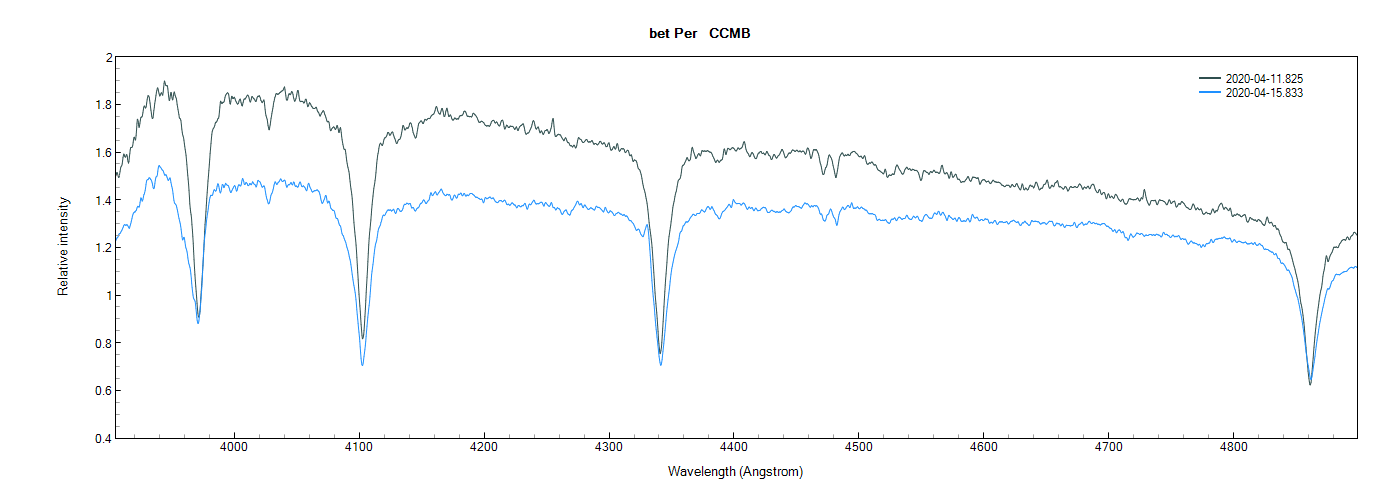Spectrum of Algol
May 2020 :
Algol is a 2nd magnitude star of the constellation Perseus. This class B (B8) star appears rather normal, its faintly bluish white light. It is a main sequence star that is 3.5 times more massive than the sun.
Every 2.8 days, the brightness of the star drops from magnitude 2.1 to a magnitude 3.4 (~30 percent of normal). There are on a few times during the year when the eclipse occurs on a clear night. The entire event is not very long (only a few hours).
Algol is an eclipsing double star whose components orbit each other every 2.8 days. The companion to the observed star is a much dimmer yellow-orange class K giant star.
The B star, at 2.9 solar radii, is smaller than the K giant (3.5 solar). Each orbit, when the dimmer, larger K star passes in front of the brighter B star, we see a deep eclipse. The eclipse is only partial, some of the light of the principal component still shining brightly through. Between the deep "primary" eclipses is a smaller dip when the bright star passes partially in front of the dim one.
The graph shows the spectra of Algol at two times. The first one was taken on April 11, in the evening. On this day, Algol was at its maximum, 2.1 magnitude. The second was taken on April 15 at the eclipse maximum.
At first, I couldn’t see much of a difference; however, when I cut and enlarged the graph, the difference became obvious.
The large dips in the graph are the hydrogen absorption lines that are typical in a B-class star. If you look closely, the width of the lines is not the same. Something happened. I cannot explain it yet.




